Submitted Review
Milan Milojevic 'A Duck Billed What ?'
‘His work constantly hovers around that transitional threshold, slightly uncomfortable, yet deeply alluring.’
Milan Milojevic is a significant Australian printmaker with a practice steeped in decades of work and experimentation. He’s the recipient of many honours, and his works are found in many significant collections, notably the National Gallery of Australia. He is a pioneer of digital printmaking in Australia and he is noted for mixing his own colors. Milojevic is also simply a wonderful artist, who brings a genuine feeling of alchemy to all his creative output. He’s the genuine article, and any new set of works by him are worthy of attention.
Glowing and exuberant, Milan Milojevic’s works are steeped in a notion of wonder and a sense of the marvelous. At this stage of his career as an artist there is a celebratory tone in much of the work; there is much joy in the act of creation the exudes from every image. Yet they are not simple confections intended to delight the eye and little more. Milojevic combines rich symbolism in his art: he deliberately focuses on source material from that loose era we call the age of discovery, when European nations explored the rest of the world, making contact with the many existing inhabitants of other countries, and cataloguing the astonishing diversity of animal and plant life. People saw for the first time, creatures that they simply did not believe could exist: this is the duck billed what of the show’s title; the first Europeans to see a platypus though it was a taxidermied fake. Milojevic is very much attracted to this fleeting flash of discovery and awe, so much so that he seeks to explore a version of it by making a powerful fiction. He makes new life. Indeed, he makes a world.
This show notably features: Milojevic contains some of his fictions in in sculpturally transformed books, which serve to underline the mythology he’s creating; other works reference a Victorian-era tradition of domes. There are colorful rugs that suggest coats of arms and a striking wallpaper-style print. It’s heartening to see this kind of experimentation continuing in his work, but for Milojevic, seeking new ways to share his creations is part of his practice. He experiments with hybridity of medium, along with the complexity found embedded in his work.
Milojevic distills wonder like a substance; his use of pastiche creates new, non-existent yet somehow plausible creatures in an attempt to explore that historical moment. What emerges is a landscape unreal, that is astonishingly abundant and hauntingly luscious. Its inhabitants are hybrids, the forest they inhabit are dense as the deepest woods of legend. Milojevic mixes and matches: this is a personal technique that arises from the artist’s cross-cultural experience as he grew up as first-generation migrant. His work constantly hovers around that transitional threshold, slightly uncomfortable, yet deeply alluring. There’s always a sense that he is seeking, going further, seeing more.
Milojevic is truly at home in this realm of shifting, liminal beauty; his works are composed with strong, luxuriant color. They are sumptuous and ornate treats to the eye, yet they are also always just slightly odd. This can work as a comedic gambit: some of his birds of paradise that mix plant and animal life are delightfully funny, and intended to be so, but other works have slightly curious element that hints at something more disconcerting. Wonder is also strange, and Milojevic never lets that be forgotten: his works shimmer between states, never still, always vibrant, always alive.
AH
Andrew Harper
Image 1: Terra Incognita (rug)
Image 2: Installation, Never Ending Story
Image 3: Never Ending Story 14
Image 4: Installation, Red Bird Waterfall, Bookscape
Image 5: Red Bird waterfall
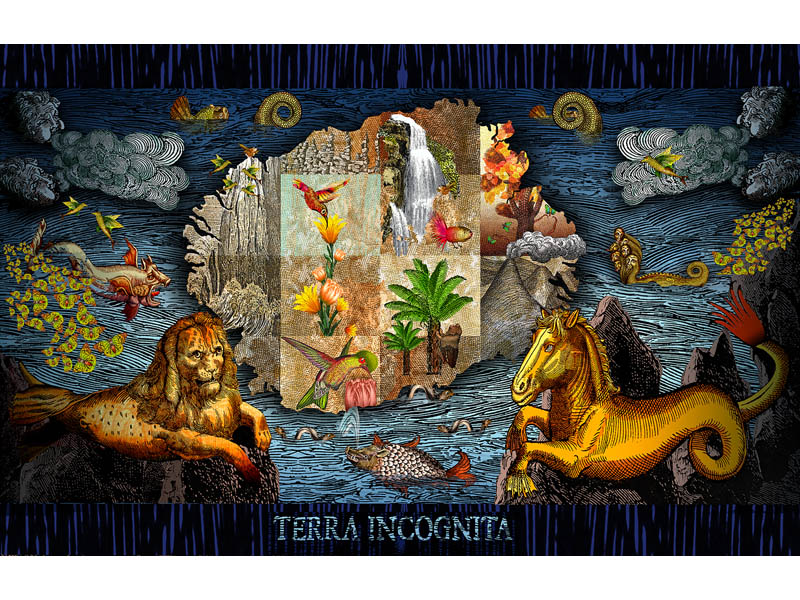
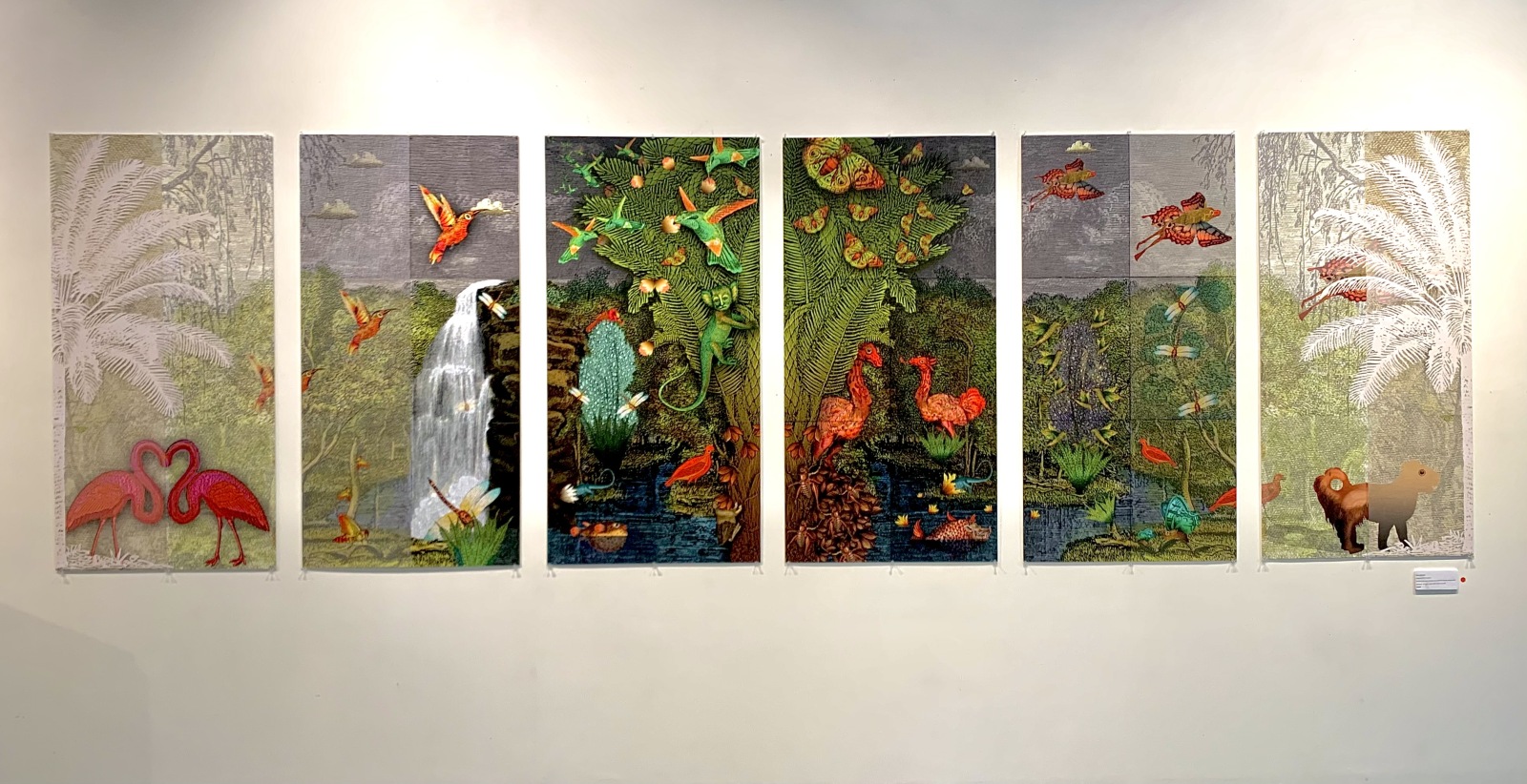
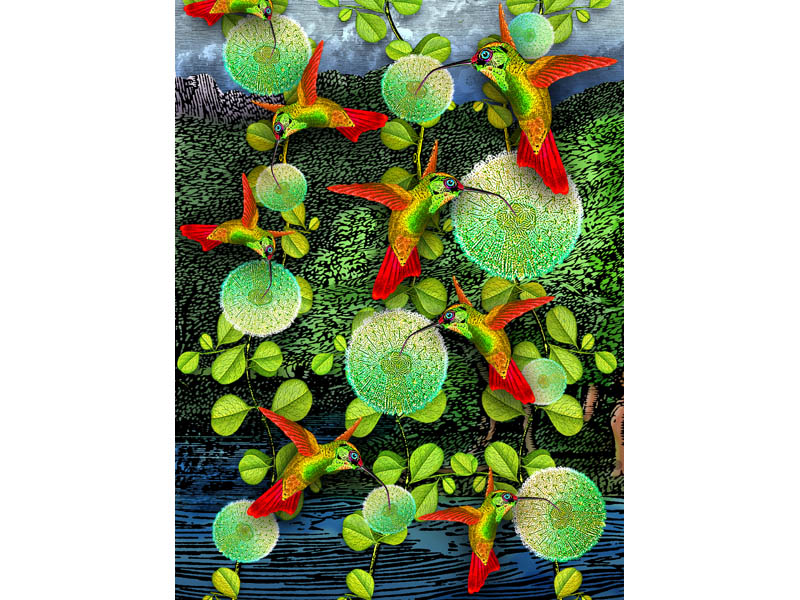
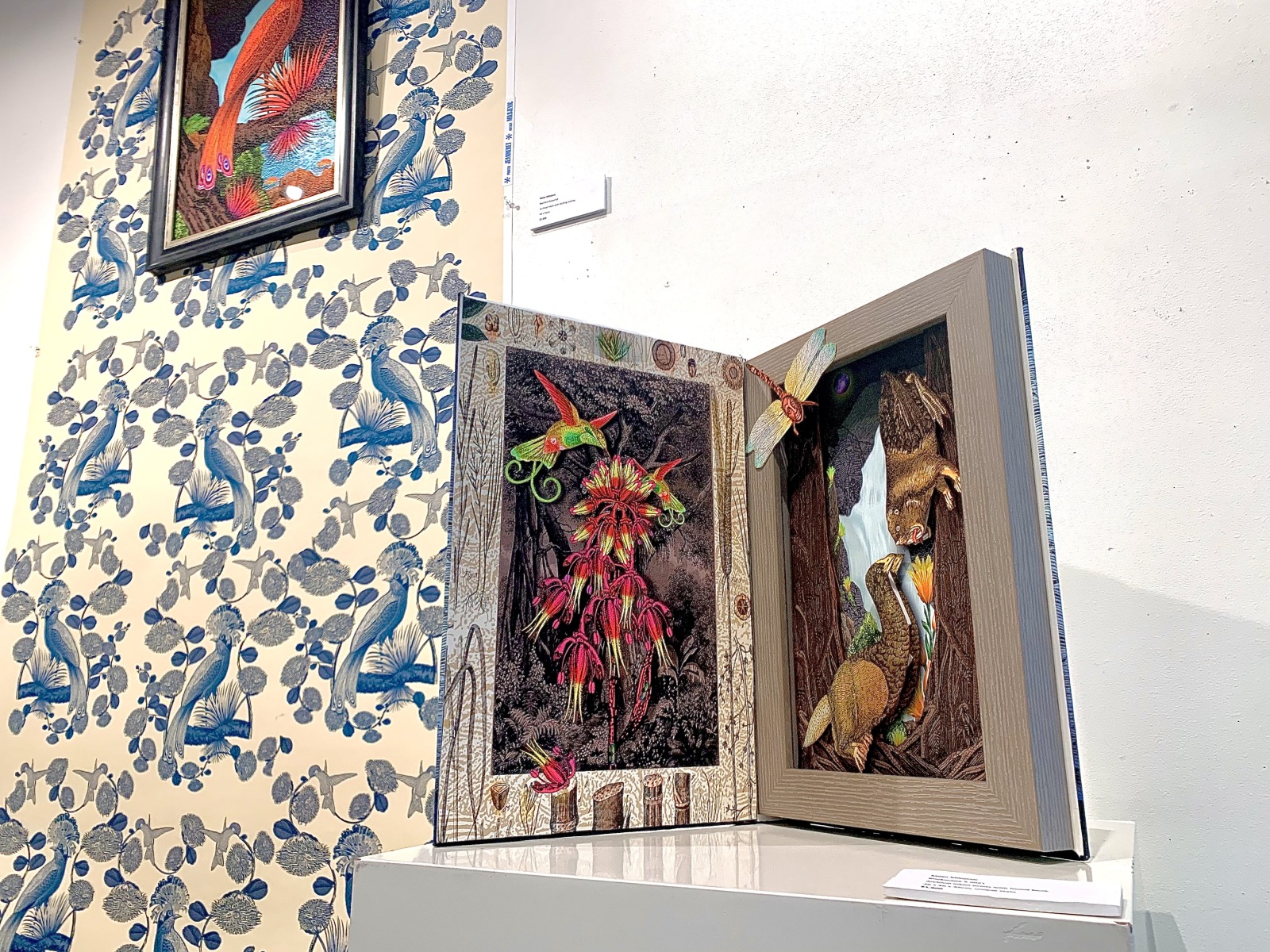
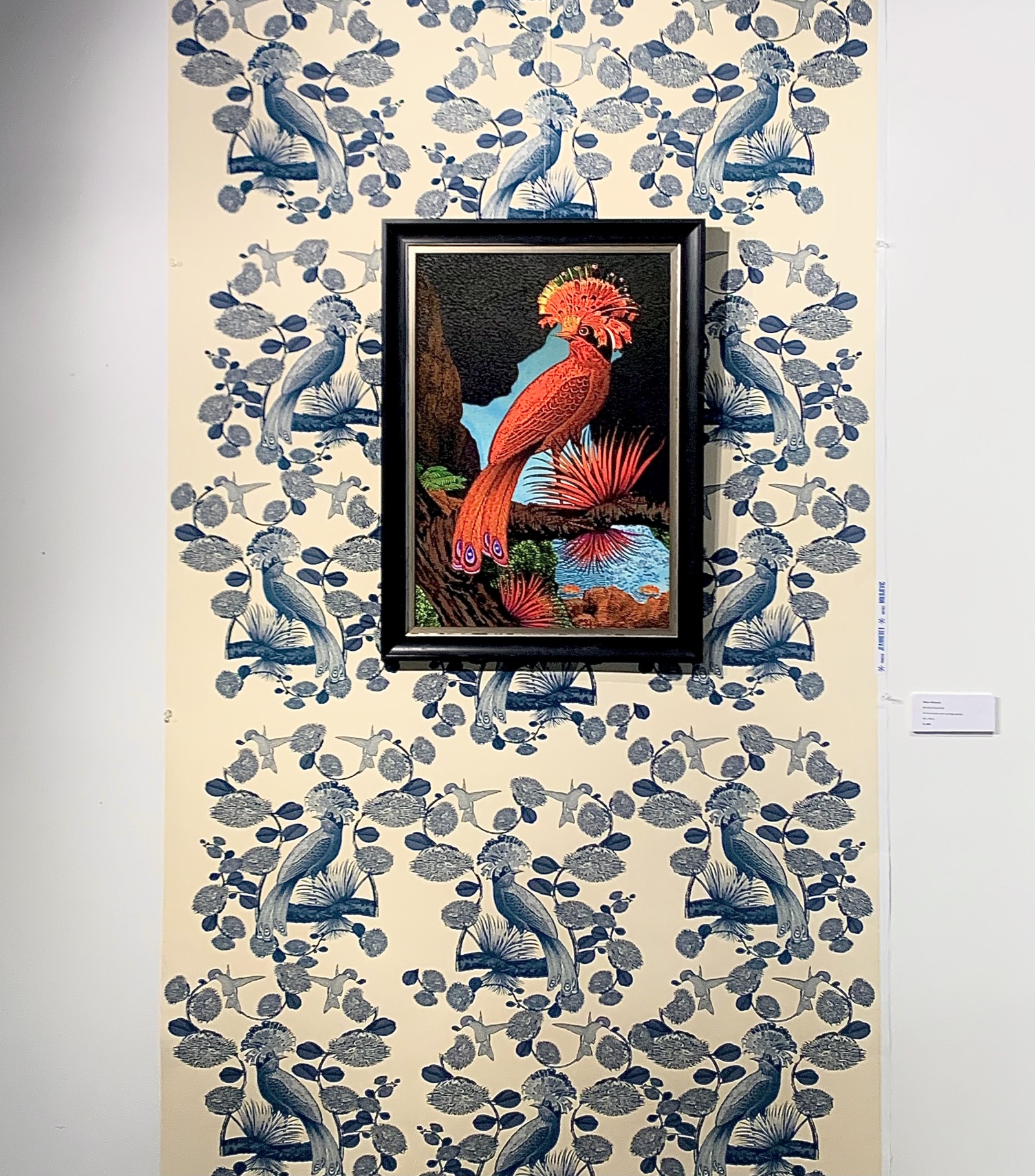
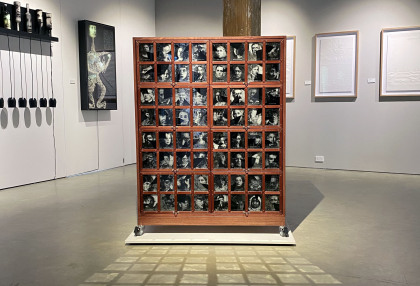
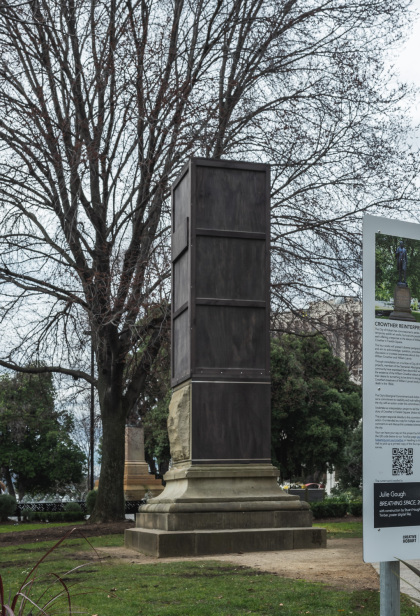
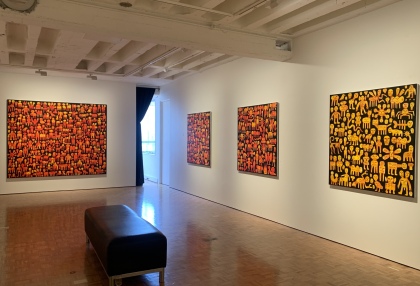
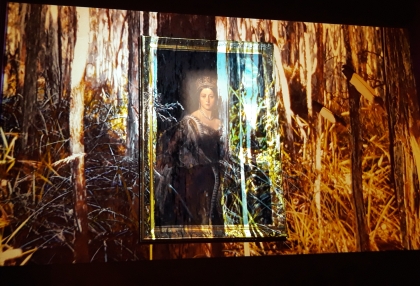
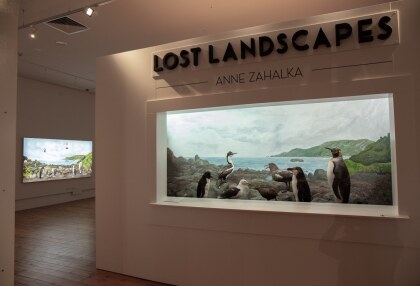
No Comments